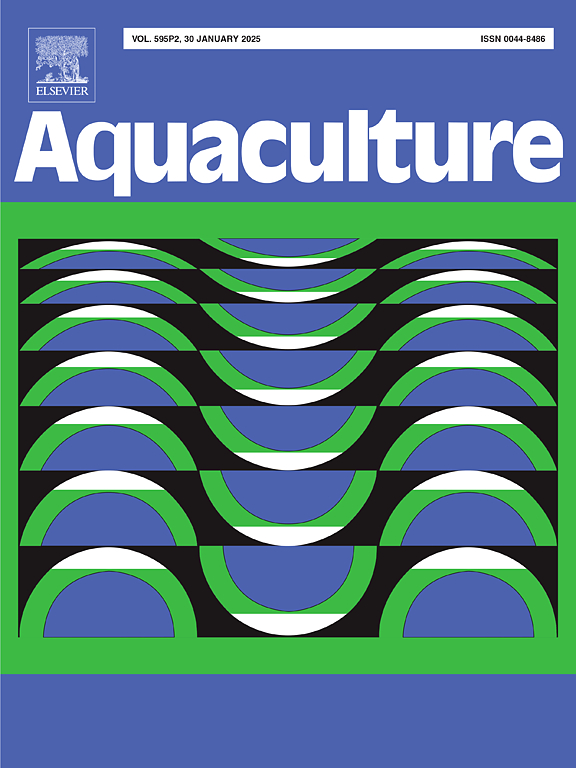Effects of trimethylamine N-oxide supplementation on low-salinity tolerance of the mud crab Scylla paramamosain relative to Na+/K+-ATPase activity and haemolymph osmolality
IF 3.9
1区 农林科学
Q1 FISHERIES
引用次数: 0
Abstract
Mud crabs (Scylla paramamosain) are important marine organisms. Typhoons and other events lead to sudden decreases in salinity, which substantially influence the survival and growth of mud crabs. This study aimed to enhance the low-salinity tolerance capacity of mud crabs through nutritional regulation of trimethylamine N-oxide (TMAO). A seven-day experiment explored the impact of dietary supplementation with five concentrations of TMAO, 0 mg/kg (CK), 100 mg/kg (T1), 200 mg/kg (T2), 400 mg/kg (T4), and 800 mg/kg (T8), on the survival rate and physiological response of juvenile mud crabs under acute low-salinity conditions. The results showed that a diet supplemented with TMAO significantly impacted the survival rate, structural integrity of the gill tissue, osmolality of haemolymph, ion content (Na+, Cl−, K+, and Ca2+), activity of Na+/K+-ATPase, and gene expression of crucial transporters and enzymes (such as nkcc, nka, clc, and gdh) in crabs following acute exposure to low-salinity conditions. In particular, 400 mg/kg TMAO supplementation, resulted in a significant improvement in the survival rate of crabs after 168 h of low-salinity exposure, and a survival rate of 89 %, in comparison to the CK group, which only achieved a survival rate of 27 % (P < 0.01). Additionally, 400 mg/kg TMAO supplementation mitigated damage to posterior gill tissue during low-salinity stress, with no observed difference in gill filament diameter before and after low-salinity stress. Furthermore, crabs treated with TMAO manifested enhanced haemolymph osmolality, increased Na+/K+-ATPase activity in the posterior gills, increased TMAO accumulation within the haemolymph and muscle tissues, and upregulated gene expression associated with ion transporters and enzymes under low salinity. Overall, these results suggest that dietary supplementation with 400 mg/kg TMAO increases the survival rate of mud crabs when acutely exposed to low-salinity stress.
求助全文
约1分钟内获得全文
求助全文
来源期刊

Aquaculture
农林科学-海洋与淡水生物学
CiteScore
8.60
自引率
17.80%
发文量
1246
审稿时长
56 days
期刊介绍:
Aquaculture is an international journal for the exploration, improvement and management of all freshwater and marine food resources. It publishes novel and innovative research of world-wide interest on farming of aquatic organisms, which includes finfish, mollusks, crustaceans and aquatic plants for human consumption. Research on ornamentals is not a focus of the Journal. Aquaculture only publishes papers with a clear relevance to improving aquaculture practices or a potential application.
 求助内容:
求助内容: 应助结果提醒方式:
应助结果提醒方式:


